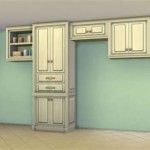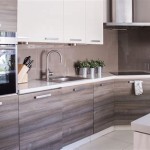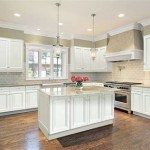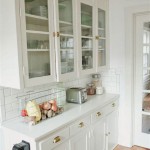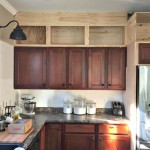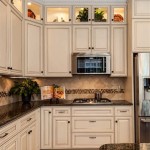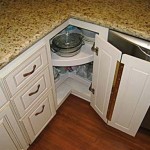Easiest Way To Paint Kitchen Cabinets Without Sanding
Painting kitchen cabinets can be a daunting task, especially the prospect of sanding them down. Sanding is a labor-intensive process that can be time-consuming and messy. However, with the right approach and techniques, it is possible to achieve a beautiful and professional-looking finish without sanding. This article will guide you through the easiest way to paint kitchen cabinets without sanding, highlighting key points and strategies for a successful project.
Degreasing and Cleaning: The Foundation for a Smooth Finish
Before applying any paint, it is crucial to ensure that the cabinet surfaces are thoroughly clean and free of grease and grime. This step is essential, even if you are not sanding, as it prepares the surface for optimal paint adhesion. Here's how to achieve a clean and grease-free surface:
- Remove all hardware: Pull out drawers and doors, and remove all handles, knobs, and hinges. This allows for easier access and thorough cleaning.
- Clean with a degreaser: Use a strong degreaser specifically designed for kitchen surfaces. Apply it to the cabinets with a microfiber cloth or sponge, scrubbing gently to remove any residue. Rinse the surface thoroughly with clean water and let it dry completely.
- Tack cloth: After the surface is dry, use a tack cloth to remove any remaining dust particles. This ensures a smooth, clean surface for painting.
Prime the Cabinet Surfaces for Optimal Adhesion
Priming plays a vital role in ensuring your paint adheres properly to the cabinets. Even without sanding, a primer provides a smooth, even surface and a barrier between the existing finish and the new paint. Here's how to apply primer effectively:
- Choose the right primer: Opt for a bonding primer specifically designed for painting over glossy or slick surfaces. These primers are formulated to adhere to existing finishes and create a suitable base for the paint to adhere to.
- Apply a thin, even coat: Use a high-quality paintbrush or roller to apply the primer in thin, even coats. Avoid overloading the brush or roller, as this can cause drips and runs. Allow the primer to dry completely according to the manufacturer's instructions before moving on to the next step.
Painting Techniques: Achieving a Professional Finish
With the preparation complete, you can begin painting the cabinets. Using the right techniques will ensure a smooth, professional-looking finish without sanding. Here's a breakdown of the essential steps:
- Choose high-quality paint: Opt for a paint specifically formulated for kitchen cabinets. Look for a paint that is durable, easy to clean, and provides excellent coverage.
- Thin the paint: Thinning the paint slightly can help to achieve a smoother, more even finish.
- Apply thin coats: Apply multiple thin coats of paint rather than one thick coat. This allows the paint to dry evenly and prevents drips or runs.
- Use a high-quality brush or roller: A good paintbrush or roller is crucial for achieving a smooth, professional-looking finish.
- Let the paint dry: Allow each coat of paint to dry completely before applying the next. This ensures a proper finish and prevents smudging.
Additional Tips for a Seamless Project
Beyond the core steps, consider these additional tips to enhance your cabinet painting experience:
- Use painter's tape: Apply painter's tape to protect surrounding areas from paint splatters. Make sure to press the tape firmly down to prevent bleeding.
- Cover the floor: Protect your floors from paint spills and drops by covering them with drop cloths or plastic sheeting.
- Work with a partner: Having a partner to assist you can streamline the process and make lifting and handling the cabinet doors easier.
- Practice on a scrap surface: If you are unsure about the painting techniques, practice on a scrap piece of wood or an old cabinet door before tackling the real cabinets. This will help you familiarize yourself with the process and achieve better results.
- Clean your tools: Clean your paintbrushes and rollers thoroughly after each use to prevent paint from drying and hardening.
Painting kitchen cabinets without sanding is achievable and can give your kitchen a fresh and updated look. By following these steps and employing the right techniques, you can achieve a professional finish that you will be proud of.

How To Paint Kitchen Cabinets Without Sanding Sustain My Craft Habit

How To Paint Kitchen Cabinets Without Sanding The Budget Decorator

Painting Over Oak Cabinets Without Sanding Or Priming Hometalk

How To Paint Kitchen Cabinets Without Sanding Sustain My Craft Habit

The Easy Way To Paint Kitchen Cabinets No Sanding Building Bluebird

Diy How To Paint Cabinets Without Sanding Vlog

Can You Paint Cabinets Without Sanding Trusted Coatings

How To Paint Your Cabinets In A Weekend Without Sanding Them Chris Loves Julia

How To Paint Cabinets Without Sanding

How To Paint Kitchen Cabinets Without Sanding Or Priming
Related Posts

